On 14 September 2012, the RIPE NCC started allocating from the last /8 of IPv4 addresses we received from IANA. This week we allocated the 1,000th /22!
As pointed out in the most recent article RIPE NCC Membership - 2012 Statistics , the number of IPv4 allocations issued since September has remained stable. In Figure 1 below you can see the number of IPv4 /22 allocations per week since September 2012. The numbers were a little lower in the second half of December but have increased again in January 2013.
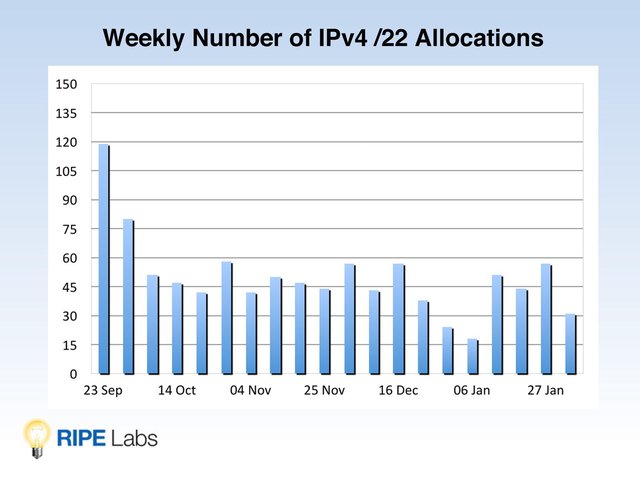
Note that the last bar doesn't show a full week but ends on 31 January, the day we actually handed out the 1,000th IPv4 /22.
As you can see in Figure 2, in the first two months, most allocations were additional allocations to existing Local Internet Registries (LIRs). This might be due to those requests that were already ongoing when we started allocating from the last /8.
Since November, the majority of /22 allocations were made as first allocations to new LIRs. This indicates that the last /8 policy helps to ensure that new entrants in the industry can still receive a small block of IPv4 address space in the foreseeable future. This was one of the motivations when the RIPE community put this into place.
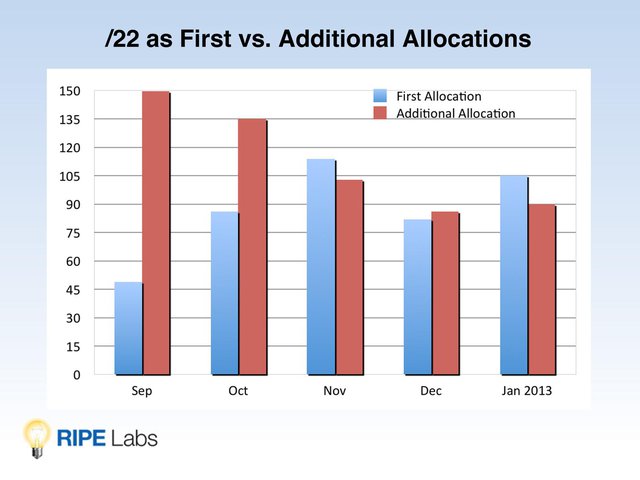
It is also interesting to look at the geographic distribution of these allocations. In Figure 3 you can see the top ten countries where the majority of LIRs that received a first allocation are located.
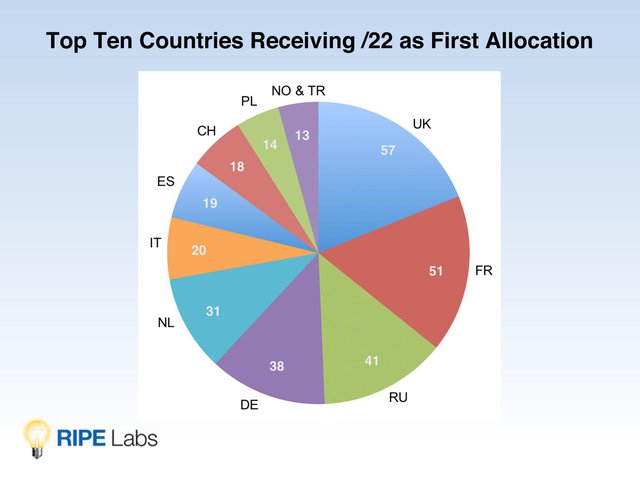
Figure 3: Top ten countries where /22s as first allocations were issued
The next figure shows the top ten countries where most additional allocations were issued. Note that for instance LIRs in Russia received a fairly large number of additional IPv4 allocations but there weren't that many LIRs in Russia that got a /22 as their first allocation.
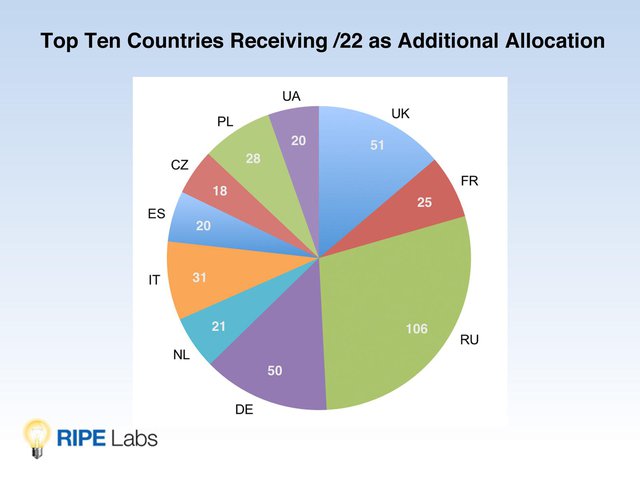
Conclusions
In summary, we can say that even though the number of IPv4 allocations has been fairly consistent since September, we don't see a big run on the last block of IPv4 addresses. Considering the fact that we have over 8,800 members, 1,000 /22s is a moderate number. Also, when looking at the distribution of first vs. additional allocations, the last /8 policy works to allows new organisations to enter the market.

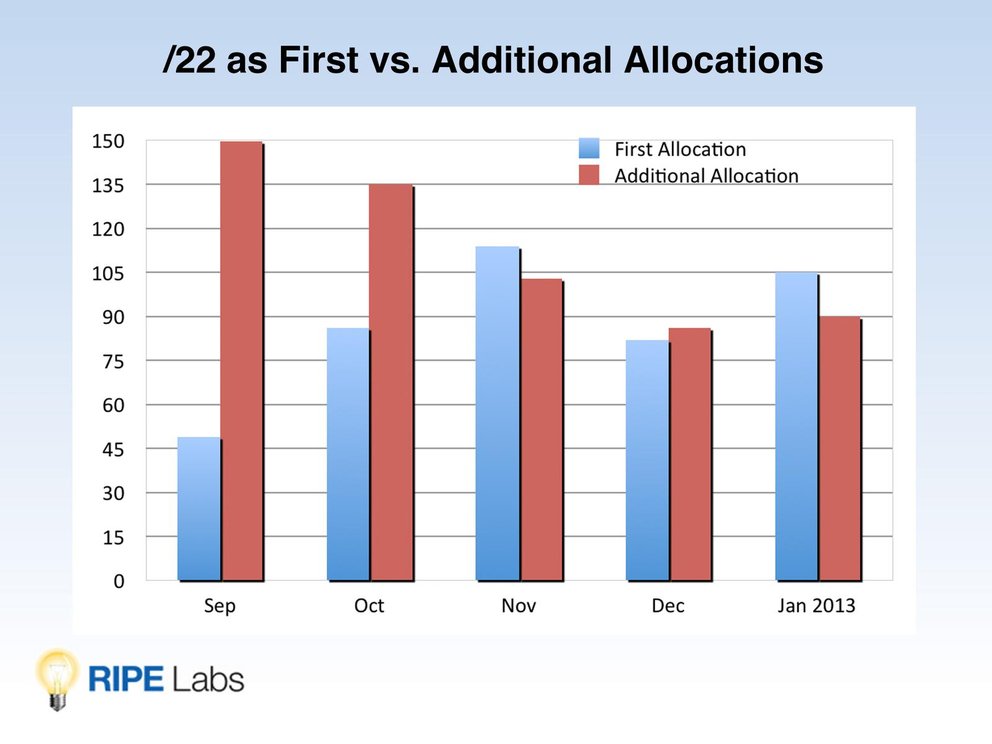
Comments 2
The comments section is closed for articles published more than a year ago. If you'd like to inform us of any issues, please contact us.
E. Bais •
11 LIR's received their /22 from the final /8 on Jan 31th, 2013.. So the question is .. who won the special cake ? :)
Lasse Jarlskov •
Wow - just 24 to go until a big round-number milestone!